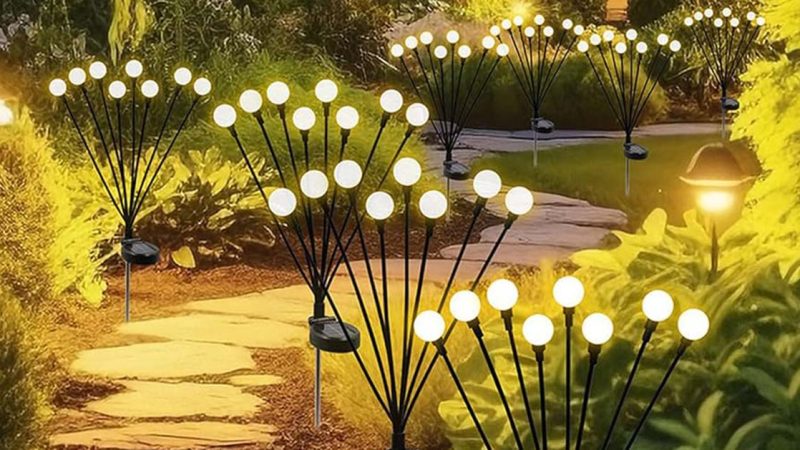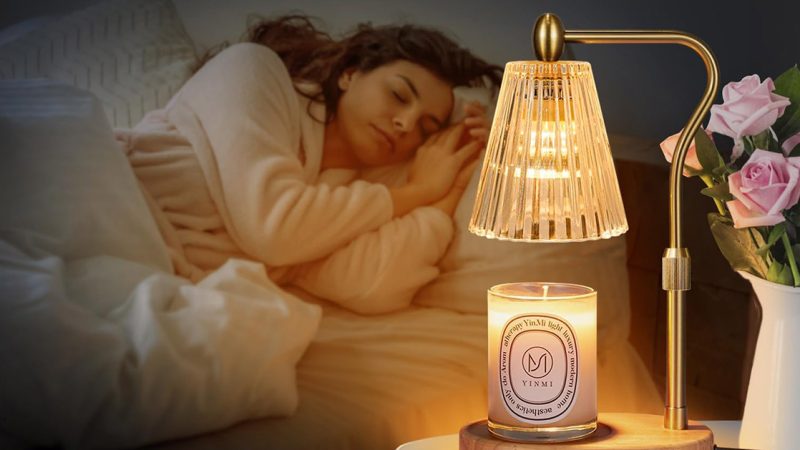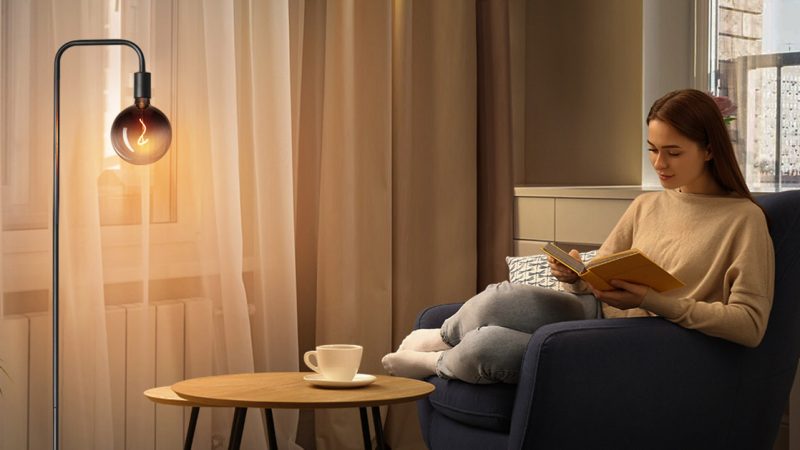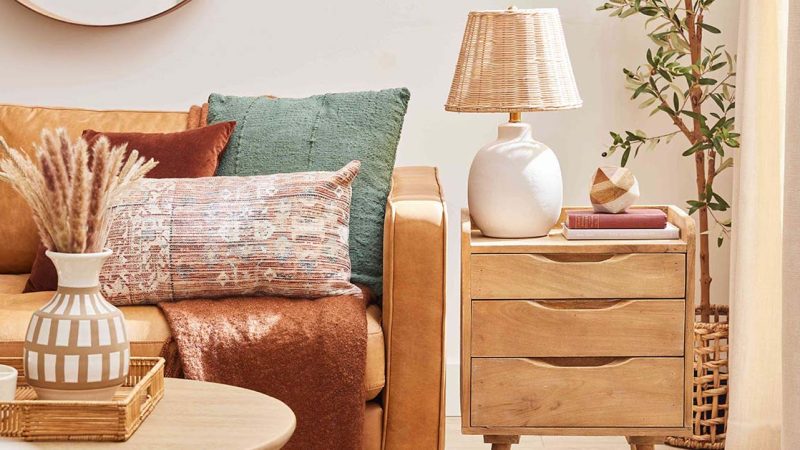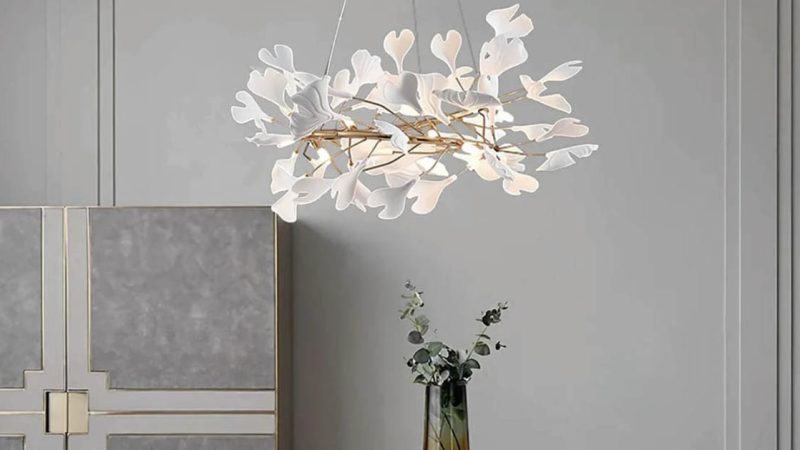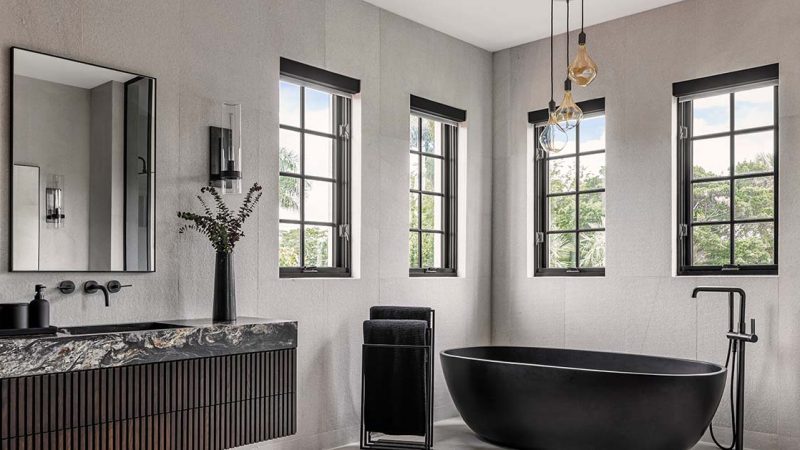From Chandeliers to Wall Lamps: A Comprehensive Guide to Home Lighting

Home lighting is a crucial aspect of modern interior design, influencing the ambiance of a room and affecting daily comfort and functionality. With a wide variety of lighting fixtures available, from chandeliers to wall lamps, there is something to suit different space requirements and style preferences.
I. Chandeliers: The Majestic Focal Point
1.1 The History and Evolution of Chandeliers
The history of chandeliers dates back to ancient times, with the earliest chandeliers made from simple torches or candles. Over time, chandelier designs became more complex and refined. In the 18th century, crystal chandeliers became a symbol of luxury in European palaces and aristocratic homes. Modern chandeliers now incorporate various materials and design styles, becoming a highlight of home decor.
1.2 Types of Chandeliers
1.2.1 Classic Crystal Chandeliers
Crystal chandeliers are renowned for their dazzling appearance and are commonly found in luxurious living rooms and dining areas. Notable brands include Swarovski and Foscarini, known for their high-quality crystals and exquisite craftsmanship, adding a touch of opulence to any space.
1.2.2 Modern Minimalist Chandeliers
Modern minimalist chandeliers feature clean lines and simple designs, suitable for contemporary home styles. Brands such as Tom Dixon and Flos offer a range of minimalist chandeliers that fit various interior environments.
1.2.3 Industrial Style Chandeliers
Industrial style chandeliers are favored for their rugged and raw design, often using metal and exposed bulbs. Brands like West Elm and HAY provide numerous industrial-style chandeliers, ideal for spaces seeking a unique style.
1.3 Installation and Maintenance of Chandeliers
Chandelier installation generally requires professional help to ensure safety and stability. Regular maintenance involves cleaning the chandelier’s shades and fixtures to maintain its shine and functionality. Choosing high-quality bulbs can also reduce replacement frequency and extend the chandelier’s lifespan.
II. Ceiling Lights: Simple and Practical Choices
2.1 Characteristics of Ceiling Lights
Ceiling lights are appreciated for their simple design and ease of installation, making them suitable for various rooms, especially those with low ceilings. Ceiling lights come in many types, from traditional round fixtures to modern LED ceiling lights.
2.2 Types of Ceiling Lights
2.2.1 Traditional Ceiling Lights
Traditional ceiling lights are typically made of ceramic or glass and come in various designs. Brands like Kichler offer a range of traditional ceiling light styles that fit classic home environments.
2.2.2 LED Ceiling Lights
LED ceiling lights are praised for their energy efficiency and high brightness, making them ideal for modern homes. Brands such as Philips and Xiaomi offer LED ceiling lights with dimming and color temperature adjustment features to suit different lighting needs.
2.3 Choosing and Installing Ceiling Lights
When choosing ceiling lights, consider the room’s size and purpose. For bedrooms or studies, select fixtures with soft light to enhance comfort. During installation, ensure the light fixture is securely mounted to the ceiling and follow the manufacturer’s instructions to ensure safety.
III. Wall Lamps: Accent Lighting for Atmosphere
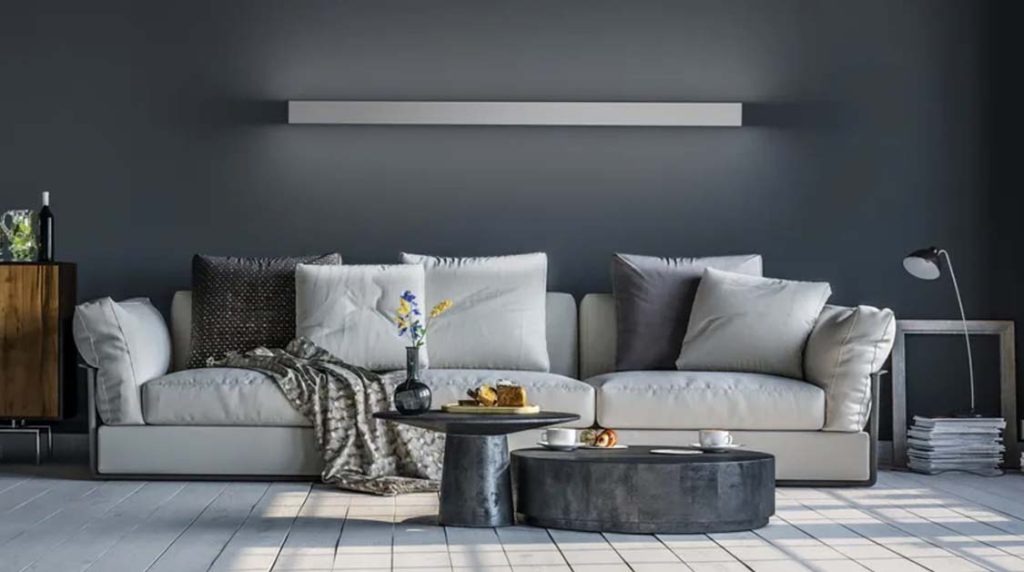
3.1 Functions of Wall Lamps
Wall lamps not only serve as accent lighting but also help create a unique atmosphere. They are commonly used in hallways, bedrooms, and living rooms to add warmth and depth to a space.
3.2 Types of Wall Lamps
3.2.1 Modern Wall Lamps
Modern wall lamps have a simple design, suitable for various home styles. Brands such as Artemide and Luceplan offer a variety of modern wall lamps with excellent light distribution and decorative effects.
3.2.2 Classic Wall Lamps
Classic wall lamps are often crafted from fine materials and feature intricate designs, making them suitable for traditional home styles. Brands like Christopher Wray offer high-quality classic wall lamps that add an elegant touch to any space.
3.2.3 Architectural Wall Lamps
Architectural wall lamps have unique designs that allow flexible light direction adjustment, making them ideal for reading or work areas. Brands like Anglepoise offer a range of architectural wall lamps that combine functionality with design.
3.3 Installing and Arranging Wall Lamps
When installing wall lamps, consider the fixture’s placement and light direction. In bedrooms, bedside wall lamps are convenient for reading, while in hallways, symmetrically arranged wall lamps can enhance spatial depth. Pay attention to the height and position of wall lamps to ensure effective illumination.
IV. Table Lamps and Floor Lamps: Versatile Accent Lighting
4.1 Purpose and Types of Table Lamps
Table lamps are typically used on desks, bedside tables, or in living rooms as accent lighting. They provide direct light and can also serve as decorative elements to enhance the space’s aesthetics.
4.1.1 Classic Table Lamps
Classic table lamps are often elegant with a historical feel, suitable for various traditional home styles. Brands such as Tiffany offer a range of classic table lamps with unique artistic styles and high-quality craftsmanship.
4.1.2 Modern Table Lamps
Modern table lamps feature simple designs and versatile functions. Brands like Muuto and Hay provide a variety of modern table lamps with dimming capabilities and flexible designs, suitable for contemporary home environments.
4.2 Characteristics and Selection of Floor Lamps
Floor lamps are used to provide lighting for large areas and are suitable for placing next to sofas or in corners. They can serve both as primary light sources and decorative elements.
4.2.1 Modern Floor Lamps
Modern floor lamps feature minimalist and creative designs that add a touch of style to any space. Brands like Flos and Fritz Hansen offer various modern floor lamps suitable for different home styles.
4.2.2 Classic Floor Lamps
Classic floor lamps are elegant and commonly found in traditional living rooms or studies. Brands such as Louis Poulsen offer classic floor lamps with traditional craftsmanship and unique designs.
4.3 Tips for Arranging Table and Floor Lamps
When arranging table lamps, consider their light usage and placement. For reading areas, choose lamps that provide focused light, while in relaxation areas, select lamps with softer light. Floor lamps can be used to fill empty spaces in a room and add layers to the design.
V. Lighting Materials and Design Trends
5.1 Choosing Lighting Materials
Different materials can affect the appearance and light quality of fixtures. For example, metal materials are often used in modern and industrial-style lighting, while glass and crystal are common in classic and luxurious designs.
5.1.1 Metal Fixtures
Metal fixtures offer durability and a modern look, commonly used in modern and industrial-style homes. Brands like Tom Dixon and Menu offer various metal fixtures with diverse design styles.
5.1.2 Glass Fixtures
Glass fixtures usually have an elegant and transparent effect, suitable for various home styles. Brands such as Louis Poulsen and Kartell offer glass fixtures that are both beautifully designed and functional.
5.2 Design Trends and Innovations
Recent trends in home lighting design include diversity and innovation. Smart lighting, eco-friendly materials, and personalized customization are becoming significant directions in lighting design.
5.2.1 Smart Lighting
Smart lighting technology allows fixtures to be controlled via smartphones or voice assistants, offering greater convenience and flexibility. Brands like Philips Hue and Nanoleaf provide various smart lighting products suitable for modern homes.
5.2.2 Eco-Friendly Materials
The use of eco-friendly materials in lighting design is increasingly important. Brands like HAY and Muuto offer fixtures made from recyclable materials, aligning with sustainable development principles.
5.2.3 Personalized Customization
Personalized lighting products can be designed according to individual needs and preferences, providing a unique home experience. Brands like Lamps Plus and Made.com offer customization services to meet different user needs.
VI. Lighting Layout and Design Tips
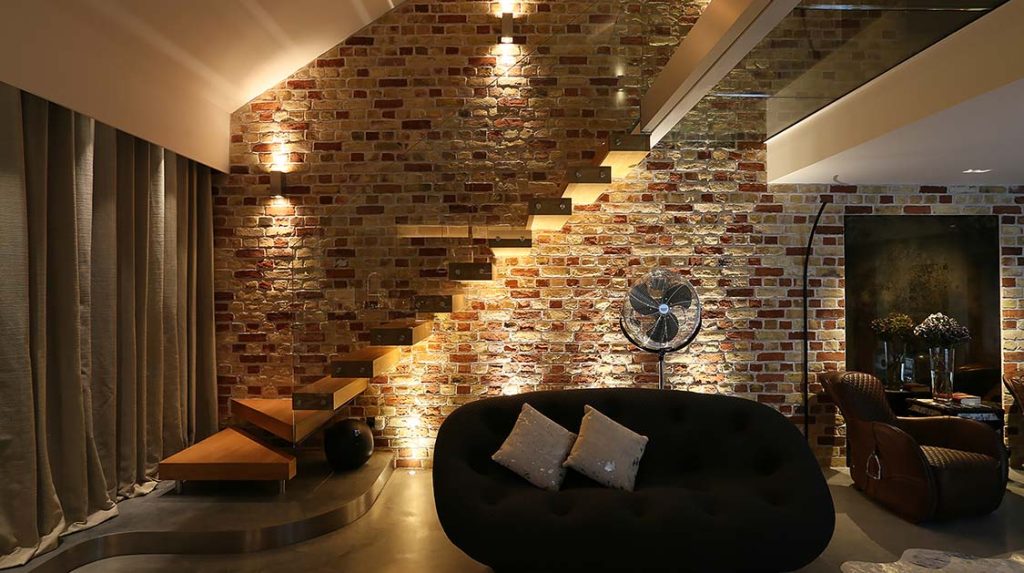
6.1 Principles of Lighting Layout
A well-planned lighting layout can enhance a space’s comfort and functionality. Factors to consider include light intensity, color temperature, and lighting layers.
6.1.1 Functional Lighting
Functional lighting is used to provide adequate light for specific activities. For example, bright direct lighting is suitable for kitchens and studies to improve work efficiency.
6.1.2 Ambient Lighting
Ambient lighting is used to create the atmosphere and emotional experience of a space. Soft lighting and indirect lighting can be used, such as wall lamps and floor lamps in bedrooms and living rooms, to add a warm feeling.
6.1.3 Decorative Lighting
Decorative lighting highlights specific elements in a space or adds visual interest. For instance, installing spotlights above artwork or decorative items can draw attention and highlight these focal areas.
6.2 Lighting Design Tips
6.2.1 Layering
Using layered lighting design can enhance a space’s depth and dimension. Combining chandeliers, ceiling lights, and wall lamps can create rich lighting effects.
6.2.2 Dimming Features
Dimming features allow you to adjust the light intensity and color temperature according to different needs and occasions. For example, use softer light for dining and brighter light for reading.
6.2.3 Color Temperature Selection
Different color temperatures affect the ambiance of a space. Warm color temperature lighting is suitable for creating a cozy and relaxing atmosphere, while cool color temperature lighting is ideal for clear and focused lighting.
Home lighting is not just a functional need but an important component of home design. By selecting the right fixtures and arranging them properly, you can enhance both the comfort and visual appeal of your space. Whether it’s chandeliers, ceiling lights, wall lamps, or table and floor lamps, each type of fixture has its unique charm and function. Understanding the characteristics of different lighting options and current design trends will help you choose lighting products that fit your home style and needs.
We hope this comprehensive guide on home lighting helps you make informed decisions in your lighting choices and design. By combining modern technology with traditional craftsmanship, your home space will become more comfortable and beautiful.
